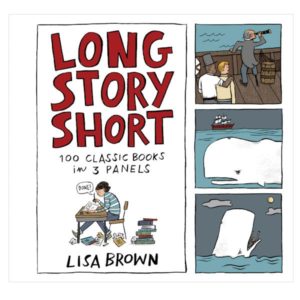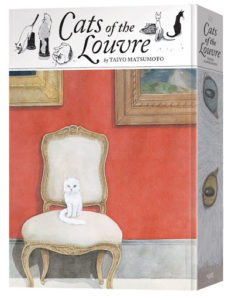The Silence by Don DeLillo
Illusory though it is, there’s an endorphin-rush moment when you begin a novel that feels as though it was written just for you. The story’s arc is almost irrelevant. What blows your hair back are the observations in sentences that seem perfectly formed. It’s as if your limbic system has been waiting for this moment. And from this instant, you know that you will need to read everything ever written by this author, this new shadow of you. For me, one such author is Don DeLillo.
I don’t recall how it was in my twenties I ended up reading DeLillo’s “Libra,” a novel about Lee Harvey Oswald. I wasn’t particularly interested in traveling into an imagined rendering of Oswald’s mind. By novel’s end, however, I felt as though I learned more about him than any nonfiction book could reveal. But more than anything, it was DeLillo’s writing that had me up, pacing and reading. There was a rhythm to the words. To this day, I will reread a chapter of DeLillo, much in the same way we listen to our favorite musicians over and over.
DeLillo’s awards and accolades are many, his influence on a generation of writers legion, notably Jonathan Franzen and the late, great David Foster Wallace. His modernist style made him a talisman to those pondering modern life. While DeLillo may not be a widely read author, his writing reminds me of what someone said of The Velvet Underground: not many listened to their music, but those who did started a band. Reading DeLillo made one want to write. And, after 50 years as a published author, he’s still at it.
His latest novel, “The Silence,” could actually be considered a novella. It’s only 117 pages, double-spaced. (The fact that such a svelte book was released in a fickle publishing industry speaks to DeLillo’s reputation.) It takes place on Super Bowl night, the year 2022. A couple, Tessa and Jim, are flying back to New Jersey from Paris. As they approach stateside, the commercial plane loses its lift and plummets. Whereas Jim had been staring at the screen that tracks the plane’s location, airspeed, and estimated time of arrival, he now visualizes the soon-to-be news footage reporting their fiery demise.
At the same moment, another couple, Max and Diane, are ready to watch the game in their Manhattan apartment and are also waiting for Tessa and Jim to join them. Already there is Martin, a former university physics student of Diane’s. Then all electric currents and signals disappear. When it dawns on them that this outage is widespread and not likely to end soon, Max (who appears to have a slight gambling problem) loses it a little. He stops just staring at the blank screen and starts to announce a made-up football game, replete with commercials.
Martin, already a man with “a nowhere stare,” begins spouting thoughts that are sometimes thought-provoking, sometimes absurd. For him, that blank screen means so much more than a power outage. “What is it hiding from us?” Not knowing what else to do, Diane observes and listens to these two, a low-grade panic beginning to well insider her. “The pauses were turning into silences and beginning to feel like the wrong kind of normal.”
Tessa and Jim survive the crash and eventually find their way to Max and Diane’s apartment. (On the shuttle ride from the crash site to a medical clinic, the van comes across a woman jogging amidst this grid shutdown. An odd site, the van’s driver slows to the jogger’s pace, the shuttle riders watching her as she blithely jogs.)
DeLillo is a master of dialogue. In this novel, however, the characters don’t really converse with each other. More than once, someone will exclaim that they are just going to say what comes to mind, for—given the current situation—no one is going to remember it anyway.
During the Cold War, DeLillo’s work explored how life plays out under the threat of mutually assured destruction. There was a dread mixed with weapon-worship, as evidenced in his noting that we named warheads and rockets from Greek and Roman mythology. On this night, in the year 2022, there’s no electrical power to launch such force. The conversation is no longer about nuclear arms; it’s now “the language of living weaponry. Germs, genes, spores.” To Martin “the war rolls on and the terms accumulate.” In fact, he seems to think that this blackout is just the beginning of World War III.
If you have yet to read DeLillo, I would recommend beginning with earlier works, such as “White Noise” or “Libra.” The former devilishly satirizes university culture in an era of unyielding media saturation; the latter shows us how a disillusioned loner can make history. (I am not saying don’t read his latest novel, for it was certainly prescient, being that it was written before our own upheaval that greeted us soon after last year’s Super Bowl. I am saying that his earlier works are that of a virtuoso.)
Another theme DeLillo mines is the formidable nature of crowds. In the “Silence,” our characters try to avoid what they know is taking place on the streets. (Max ventures out briefly to take in the growing tension, “a thousand faces every minute,” “curses rising into the air.”) This power is on full display in “Mao II” (another recommendation), the book beginning with a mass wedding ceremony officiated by the Reverend Sun Myung Moon.
In “Underworld,” DeLillo’s brilliant magnum opus (and my favorite), we begin with “an assembling crowd,” making their way to game three of the 1951 National League pennant, these New Yorkers bringing “with them the body heat of a great city and their own small reveries and desperations, the unseen something that haunts the day.” Outside the Polo Grounds, a black kid, with “a shine in his eye that’s halfway hopeful,” gathers with other kids—black and white—who can’t afford a ticket. They briefly strategize the best way to jump the turnstiles.
Inside, during the game, Jackie Gleason holds comedic court. An F.B.I. agent whispers to J. Edgar Hoover that the Soviets detonated their first hydrogen bomb test. This is the game where Bobby Thomson hits the series-winning home run with “the shot heard around the world.” The kid who jumped the stiles catches the ball. “This is the people’s history and it has flesh and breath.” Such events are life-defining. Yet they are, as all moments are, fleeting, “fading indelibly into the past.” It’s an electrified blend of fact and fiction that reveals truth, the very reason we read serious fiction. This is why we read Don DeLillo.



